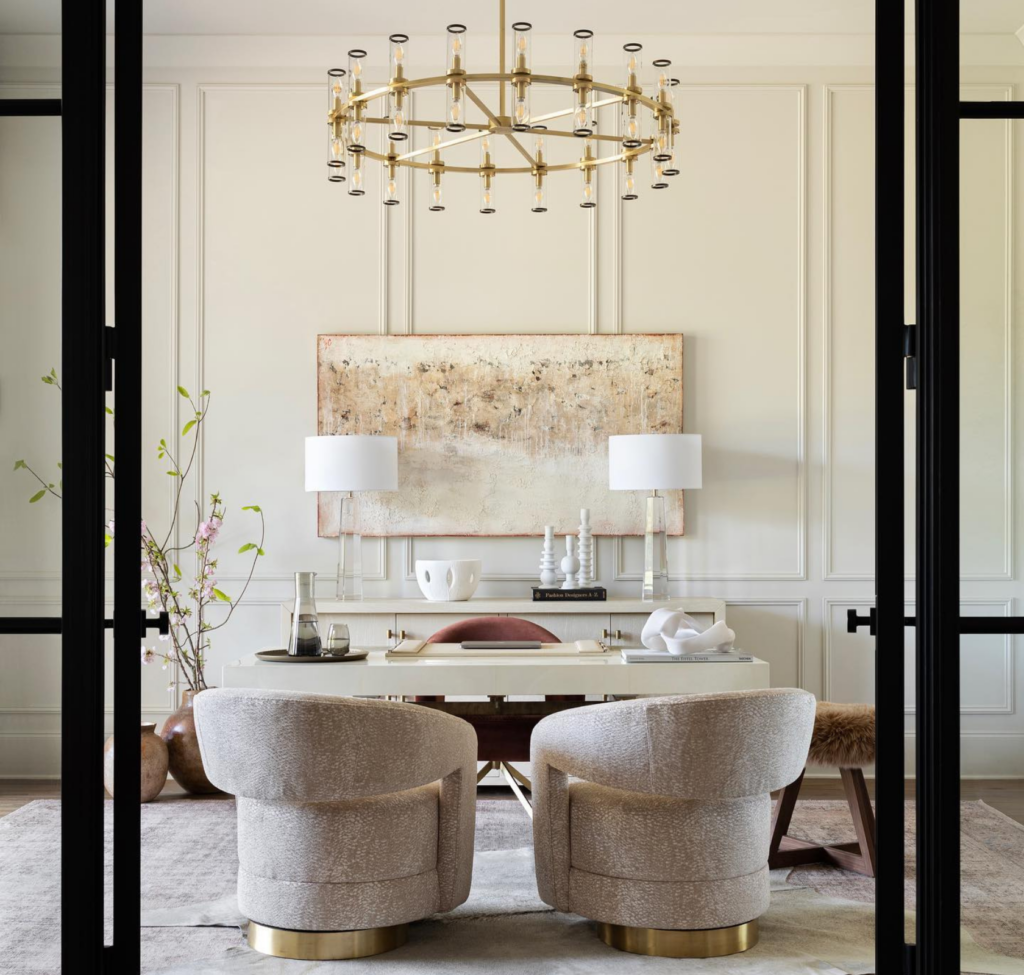Free Ground Shipping on Orders Over $49 Details & Exclusions Excludes Curb Side Delivery (LTL). Lower 48 United States Only. • Shop The Latest Lookbook
Mar 20, 2013
Home Office Lighting Requires Special Attention
As more of us work as independent consultants or telecommute, home offices are being used more and more.
Many homes have an “office” in a room or part of a room where for an hour or two, a few times a month, bills are paid, letters are written or recipes are filed. This is not the type of office I am addressing.
If you regularly spend six or more hours at a time at your home office, then proper lighting can increase productivity, accuracy, and minimize fatigue and eye strain. Office tasks (whether computer-based, paper-based or a combination) require different lighting than most other areas of the home.
Light Your Home Office to Reduce Eyestrain
Don’t watch TV in the dark! How many times have you heard that? Don’t look at computer screens in the dark either!
The truth in the statement lies in understanding contrast ratios. The eye can adapt to a very wide range of light levels, but it can only adapt to one light level at one time. When one looks at a bright computer monitor on a dark background the eye doesn’t know whether to adapt to the bright monitor or the dark background. When this happens hour after hour, day after day, fatigue sets in.
The same thing can happen when looking at a brightly lit sheet of white paper in a dark room.
To lessen eyestrain:
- Lower the brightness on the monitor
- Increase the light in the surrounding area; or
- Do both.
Just the opposite problem can occur when one places a computer monitor in front of a window.
The bright daylight surrounding the screen makes it difficult to see what is on the screen
Watch for Reflections on Shiny Surfaces
Another area of concern is reflections on shiny surfaces, like computer screens and slick printed material. These reflections obscure the task making it difficult to read.
Windows are often the most noticeable cause of reflections but other light sources can be a problem, too. As you may recall from basic physics, the angle of incidence equals the angle of reflectance-so if light strikes the task (or monitor) at the wrong angle, it will bounce into your eyes. Moving the offending light, changing your orientation to the light, or both can mitigate this problem. This relationship is called Eye-Task-Source Geometry.
Ideally the light should come from the side, for example; light coming from the right (whether ceiling, wall or desk mounted) will reflect off to the left. Light coming from the front will tend to reflect up into your eyes. Computer monitors also reflect light sources that are located behind you (over your shoulder).
Layer Light for Best Design
All good lighting design uses layers of light, for the most efficient and aesthetically pleasing design strategy. The three basic layers are:
- Task (putting high light levels only where we need it)
- Ambient (for circulation and to control contrast)
- Accent lighting points of interest (optional but important for providing visual interest)
Consider Fluorescent for Task, Ambient and Halogen for Accent
Using fluorescent is an excellent choice of light source for both task and ambient light. I recommend 4-foot T-8 lamps with electronic ballasts in high activity areas like a home office.
A good color choice would be 3500K. (See article, “I Hate Fluorescent!) The long life, great color qualities, and high efficiency make it the logical choice.
Also, the large size of fluorescent provides a large radiant surface that helps to minimize shadows.
For ambient light you can use ceiling surface mounted fixtures, indirect pendants or wall mounted light shelves.
For task light you can use fluorescent down lights (either recessed or surface mount) over the task areas or under cabinet (or shelf) lighting. Be sure not to locate a task light directly in front of the work area (like an under-cabinet light), as reflections can bounce directly in you eyes.
For accent light, a spotlight or two (either recessed or surface) that uses halogen lamps can be a nice touch.
Copyright © 2005 Lighting.com



